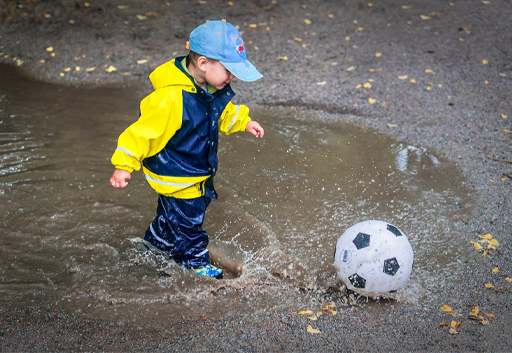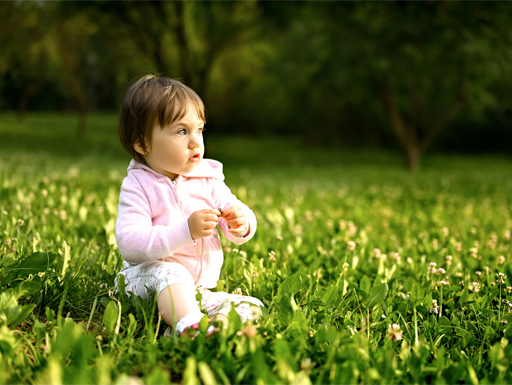3.3 Message 3: The outdoors is a space for physical activity
Often the outdoors is seen as predominantly a space for physical development. One reason for this is the important role that early years settings can have in addressing issues about children’s health including obesity prevention (Benjamin Neelon et al., 2015). This emphasis on physical activity, means that both research and practice can assume that the outdoor environment is only appropriate for those children who can already walk. This is an issue that will be explored in more depth in Session 2 but an interesting example is research carried out by Dinkel et al. (2019) in the United States. They researched in settings which took children as young as 6 weeks old. The researchers describe children climbing, running, sitting, squatting, and standing but they ignore what babies are doing. This makes the reader wonder if the babies are all indoors. Or perhaps if they were outdoors, they were not considered to be noteworthy because they were ‘contained’ in a pram or baby seat – thereby having their movements restricted. Lori Grisez, a paediatric expert uses the term ‘Container Baby Syndrome’ to discuss how too much time spent ‘contained’ in ‘equipment [such as] swings, bouncy seats and car seats’ (2018) is not good for a baby’s development.
Activity 3 Thinking about your own experiences and observations
At this point it would be good to think about your own experiences and observations. Have a go at responding to the questions below in your Learning journal or add them in the text box below.
- Have you noticed babies being given opportunities to be outside?
- Do these opportunities include being ‘contained’ in equipment that might prevent their movement?
- Have you noticed babies who have been given the freedom to move around and explore their environment like the young child in Figure 3?
Comment
The opportunities you note for babies to engage with the outdoors may very well depend on your geographical and cultural context. Of course, it is very important the babies are kept safe and ‘contained’ when this is appropriate but it is also important that they have the freedom of movement to explore their surroundings. This freedom will impact positively on both their physical and cognitive (intellectual) development.


